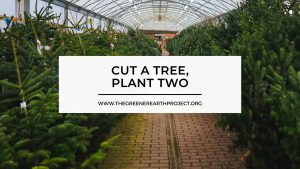Water is a valuable, life-giving resource. However, it is both under threat and a threat. Natural defences such as woodland could protect our water supplies and the environment that we have created for ourselves.
Trees versus erosion
Leaves can reduce soil erosion. Rain gets caught in the foliage and then runs down the truck, reducing the impact the rain has on the ground and helping water to soak into the mud.
Tree roots often extend further than branches and can help water to soak into the soil, preventing soil erosion. Roots improve drainage by holding soil in place and preventing compaction. Furthermore, roots help in stabilising riverbanks, reducing the amount of mud from collecting in waterways.
Trees versus flooding
Trees and rough vegetation can be described as a watershed area, which is an area that drains rainwater into a body of water, like a lake, or wetland, such as a bog. However, bog and marshland are in short supply in the UK. This is often due to government payments encouraging farmers to ‘improve’ land for pasture. Many of these areas were then used to graze animals,1 which compacts and damages the soil.
Rough vegetation can reduce runoff and ‘improve rainwater infiltration’, which is where water on the ground surface enters the soil. Infiltration is 60 times higher in woodlands than grasslands because the soil in woods is less compact.
Trees absorb water after storms or heavy rainfall, which is then stored in their roots. The water is then slowly released into the atmosphere via transpiration, which is when water evaporates through the leaves.
Woodland that complies with the UK Forestry Standard can reduce flooding by slowing the flow of water by up to 65%.
Trees versus water pollution
The rain often drag pollutants from gardens and farmland into watercourses. As trees absorb water, they not only slow the flow towards bodies of water, they also filter pollutants. Woodland can reduce farming-related pollutants from draining into watercourses by up to 80%. Other benefits of planting trees between farmland and bodies of water include:
- reducing sediment runoff by 90–100%;
- reducing pesticide runoff by 60–100%;
- decreasing nutrient loss by 20–80%; and
- capturing ammonia from livestock.
Water quality is incredibly important because this is where we get our drinking water. However, access to adequate fresh and clean water is a challenge, with approximately half a billion people having insufficient water throughout the year and suffering from water scarcity.
Healthy forests are vital for human wellbeing as a result of their water supply. In fact, woodland is responsible for sourcing 75% of the world’s fresh drinking water.
Read more:
- Juniper T, ‘Taming the flood’, What Nature Does for Britain (2015) London: Profile Books, pp. 109-168.





